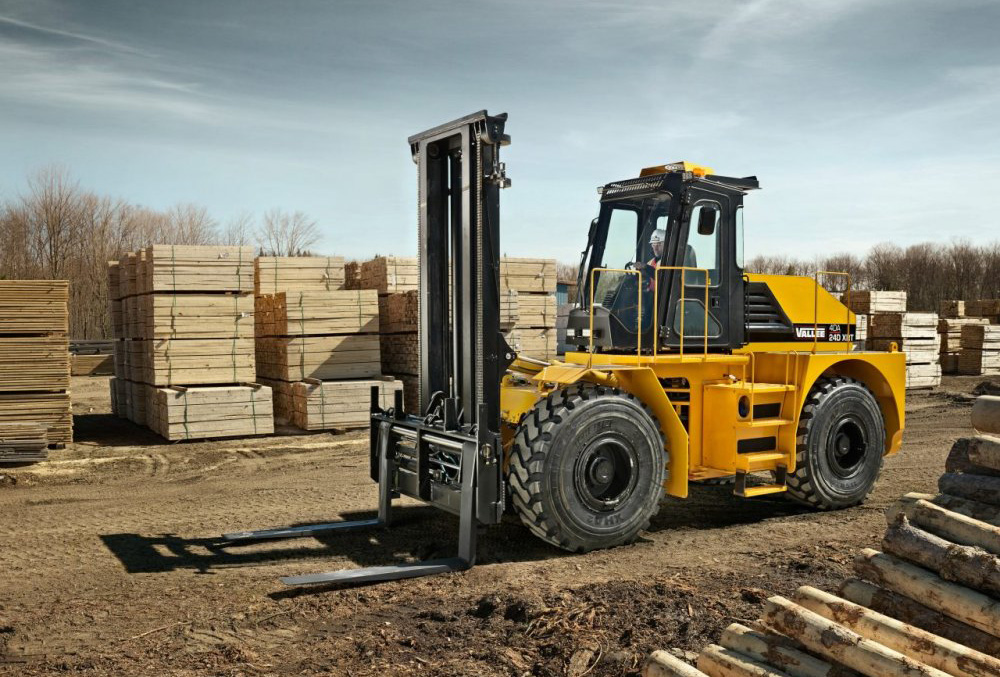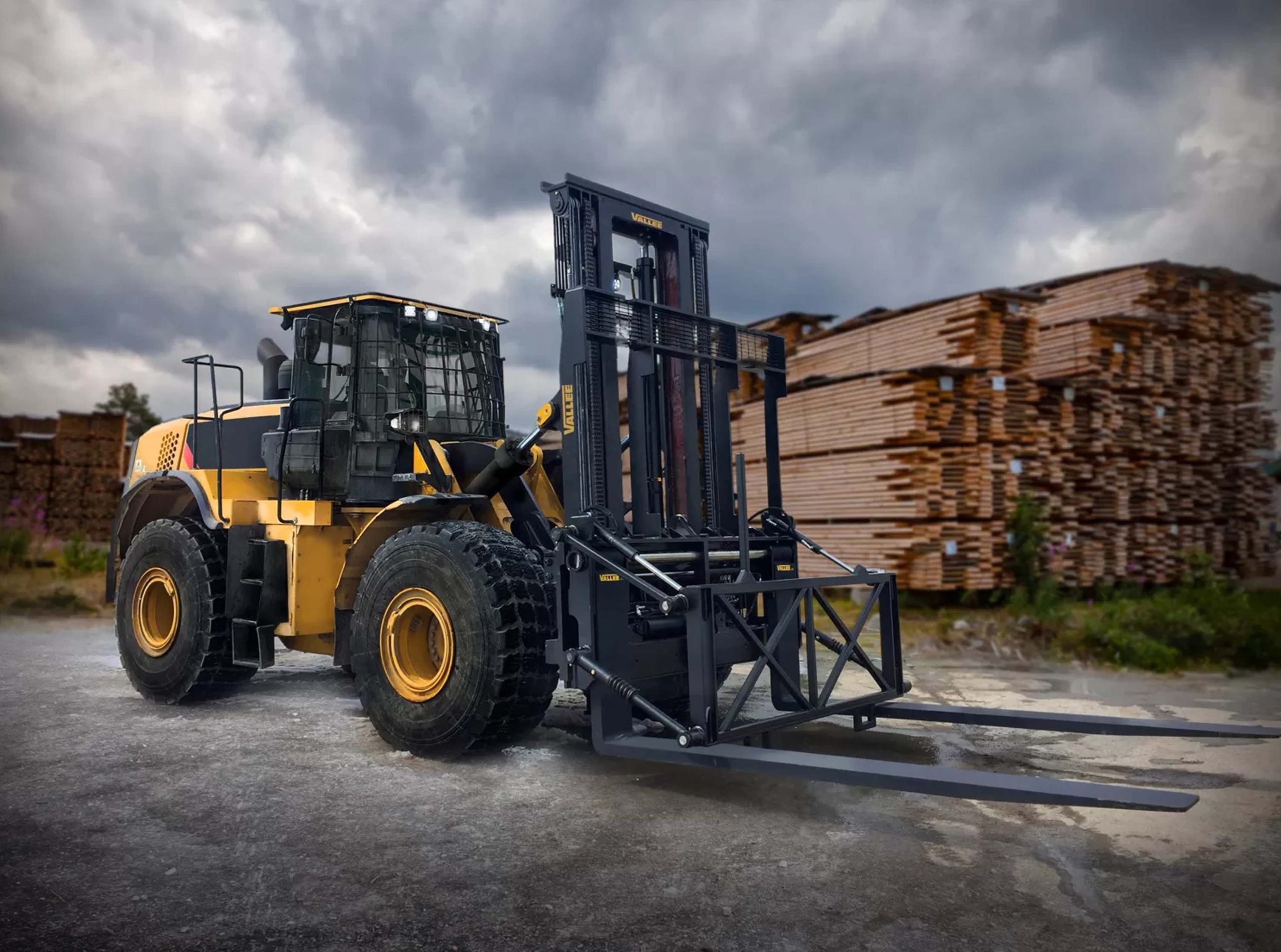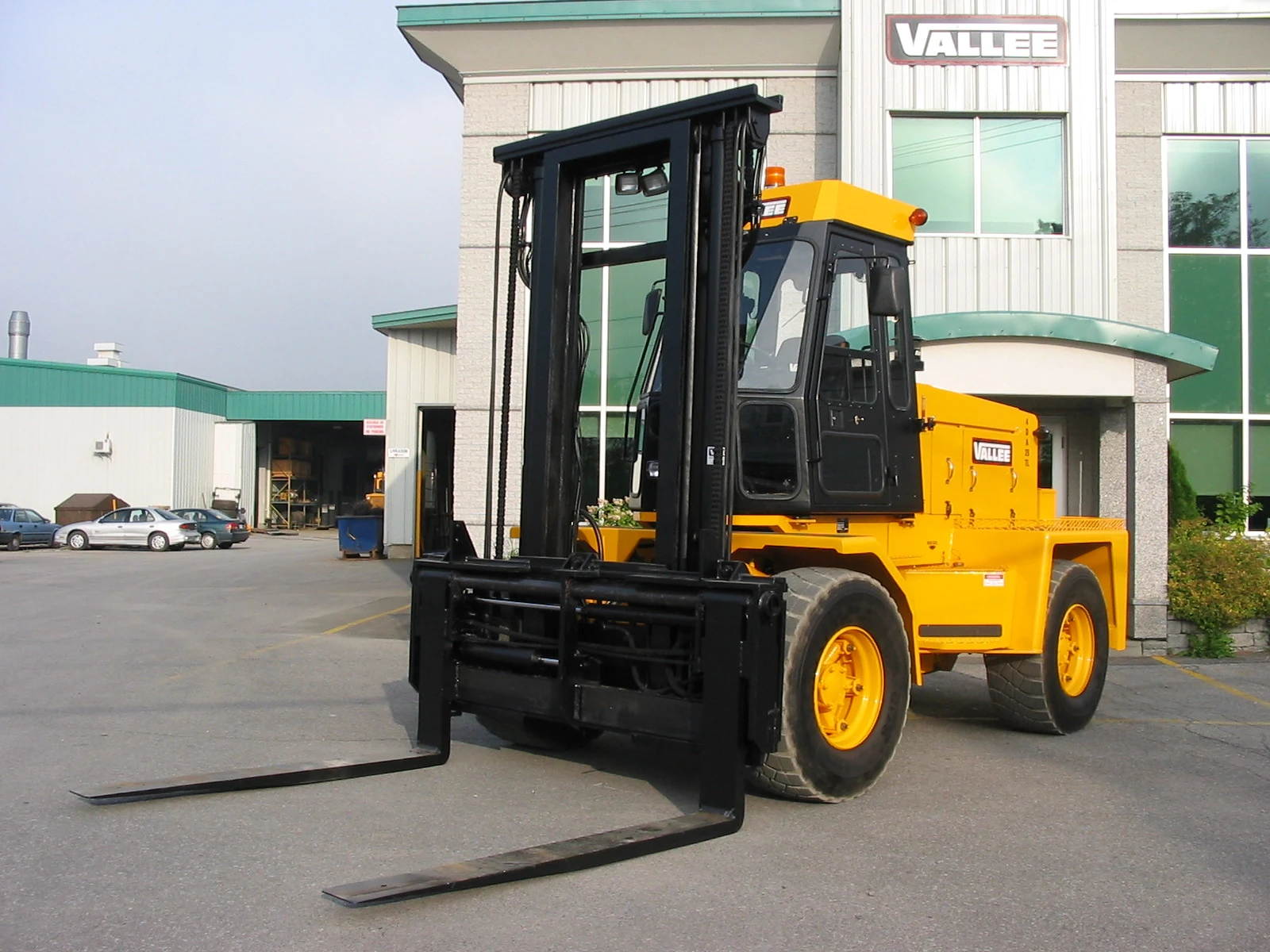fForks are indispensable components of your forklift. These two parallel arms extending from the front play a crucial role: they slide under loads or pallets to lift, move, and set them down safely. The dimensions of forklift forks are essential for the success and safety of any handling operation. Using forks of the right size ensures a firm and stable grip on your moving load. Improper use can lead to load drops, unfortunately common and part of the 34,900 forklift-related accidents reported each year by the Occupational Safety and Health Administration (OSHA), the federal government agency in the United States.

Forklift Forks: What You Need to Know About Their Types and Dimensions
Understanding the dimensions of forklift forks is critical to optimizing handling operations. The “1 ½” x 4” x 42”” size is one of the most common fork formats.
Here’s a breakdown of these numbers and what they signify:
- 1 ½” or 3.8 centimetres: This figure, always mentioned first, indicates the thickness of the fork. It can be measured on the shank or the vertical part of the fork. The thickness is chosen according to the forklift’s load capacity and handling needs. Adequate thickness ensures the fork’s strength and stability when handling heavy loads.
- 4” or approximately 10 centimetres: This measurement denotes the fork’s width, measured from one side of the fork to the other.
- 42” or approximately 106 centimetres: The length of a fork is measured along the blade, from the tip to the base of the shank. The fork length should exceed the dimensions of the load to ensure a firm grip and prevent tipping or dropping.
Beyond their dimensions, several factors differentiate forks and forklifts:
What Are ITA Classes?
The Industrial Truck Association (ITA) categorizes forklifts based on various criteria, such as their power source, use, or load capacity. Forklifts range from category 1, which includes electric motor hand or hand/rider trucks, to category 7, encompassing rough terrain forklift trucks.
Forks are classified into five classes based on the forklift’s height and nominal capacity:
- Class 1 Forks: Forklift Height: 13’’ or 33 centimetres / Forklift Capacity: Less than 2,200 lb or about 997 kg
- Class 2 Forks: Forklift Height: 16’’ or 40 centimetres / Forklift Capacity: 2,200 to 5,500 lb or about 997 kg to 2,494 kg
- Class 3 Forks: Forklift Height: 20’’ or 50 centimetres / Forklift Capacity: 5,500 to 10,998 lb or about 2,494 kg to 4,988 kg
- Class 4 Forks: Forklift Height: 25’’ or 63 centimetres / Forklift Capacity: 11,000 to 17,600 lb or about 4,988 kg to 7,983 kg
Class 5 Forks: Forklift Height: 28.66’’ or 71 centimetres / Forklift Capacity: 17,602 to 24,198 lb or about 7,983 kg to 10,976 kg
The Cone and Tips: Two Other Important Elements for Differentiating Forklift Forks
The tips and cones of forklift forks also play an essential role in safely handling loads:
- The tips, located at the end of the forks, should be thin enough to slide under pallets easily but robust enough to handle heavy loads without bending.
- The Cones, or the beveling of the tips, facilitate entry under pallets by reducing resistance, thus minimizing the risk of damage to pallets and goods.
Paying particular attention to the state and selection of tips and cones can significantly improve the efficiency of your lifting operations and enhance safety.
How to Choose the Right Fork Dimensions?
Selecting the right forks for your forklift depends on several factors:
Type of Load: To choose forks with the appropriate length and width, consider the shape or geometry of your load. For example, pallets, boxes, or barrels, the length and width of the forks must match the load size for safe and efficient operation. The forks should be long enough to support the entire load length. The fork width should be suitable for the load. Forks too narrow can cause the load to slip, while forks too wide can hinder maneuverability in tight spaces. The load capacity of the forks should also be equal to or greater than the maximum weight of the loads you handle. You can also opt for forks that ensure a firm and stable grip on the load, considering its center of gravity and sensitivity to movement.
Your Forklift: Ensure the dimensions of the chosen forks are compatible with your forklift model and technical specifications. Essential elements to check include the fork attachment points and the machine’s lifting capacity. Follow the manufacturer’s recommendations regarding the dimensions and type of forks suitable for your forklift.
Specifics of Your Work Environment: Consider the specifics of your warehouse or work site, such as aisle widths, door heights, and potential obstacles. Opt for forks that allow easy maneuverability in your work environment, avoiding excessive dimensions that could hinder movements.
Good to Know: If you are already using a wheel loader, Vallée can transform your front loader or loader into a forklift by integrating forks selected according to your handling needs. At Vallée, we are at your service for installing a lift according to specific standards regulated by the Canadian Standards Association (CSA).
Installing a lift on a wheel loader allows you to maximize the use of your existing equipment. This process enables converting the loader into an efficient and safe forklift, extending the loader’s lifespan while ensuring optimal safety and performance during handling operations.
This operation is delicate, and expert intervention from Vallée is necessary to ensure your equipment meets forklift standards (USA and CAN).

Importance of Safety and Maintenance
The safety and maintenance of forklift forks are of paramount importance. Worn, cracked, or damaged forks can fail, leading to injuries or even fatalities for operators or nearby personnel. Deteriorion or lack of maintenance can also damage infrastructure, equipment, and products.
What Are the Regulations in Effect?
The Occupational Safety and Health Administration (OSHA) in the United States requires the inspection of forklift forks. Several organizations, including OSHA, provide industrial standards for forklift forks. Among its main guidelines and requirements, employers must ensure forks are in good condition before use. The American National Standards Institute (ANSI) also sets various requirements for forklift forks, such as the B56.11.4 standard, which defines design, dimension, operation, testing, and maintenance requirements.
Fork Maintenance, An Essential Step
To ensure forklift forks are in good working condition, regularly inspect them for signs of wear or damage. This includes checking the fork thickness and looking for cracks or bends. The forks should be cleaned to prevent dirt and rust from weakening them over time. It’s also important to measure the forks regularly to ensure they still meet standard dimensions and are not too worn. You can assess the condition of your fork with our online tool.
Signs to Look for on deteriorated Forks:
Forks should be replaced when they show a wear rate of 10%. These worn forks experience a 20% reduction in lifting capacity. Forks should be inspected daily, especially before each handling operation, to detect any signs of wear or damage. During inspection using a fork square, if the arm of the square contacts the edge of the hook, the forks should no longer be used. Look for cracks in the heels and all welds. Worn forks should be destroyed to prevent them from being used by mistake.

Conclusion
Warehouse managers, logistics managers, forklift operators, and drivers: you know that every detail counts to ensure your handling operations’ safety, efficiency, and longevity. Selecting the correct forklift dimensions is a strategic choice that ensures safety, increases efficiency, and optimizes the durability of your equipment. Properly sized forks minimize the risks of accidents related to load drops, forklift tipping, or various unexpected failures. They facilitate loading, transporting, and unloading loads, boosting your productivity. Well-chosen forks reduce wear and damage to loads, the forklift, and infrastructure, minimizing repair and replacement costs.
At Vallée, an experienced professional will guide you in the personalized selection of the most appropriate fork dimensions, types, and materials for your handling operations. Contact our experts today for more information on forklift dimensions tailored to your specific needs.




